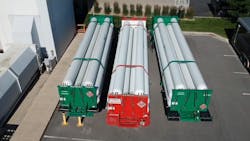Data Center Sustainability: Evolution or Revolution
In this edition of Voices of the Industry, Sean Farney, Director of Data Center Marketing at Kohler Power Systems discusses both evolutionary and revolutionary ways that data centers can prioritize sustainability in the face of increased demand.
The global impact of COVID on our livelihoods cannot be overstated. Its stay-at-home mandate brought about, arguably, the biggest change to the physicality of work in the last 50 years. And by shutting office doors, it forced Corporate IT to embrace the Cloud’s reliable, secure, and performant infrastructure, providing the activation energy for many languishing Enterprise cloud migration initiatives.
Sean Farney, Director of Data Center Marketing, Kohler Power Systems
Consequently, 2020 spending by Enterprise IT on internal data center programs trailed spending on external cloud data center hosting by $50B! And those Hyperscale data center providers benefitting from these migrations, boosted CapEx to $150B annually.
There is no doubt that data centers’ voracious appetite for ping, power, and pipe will continue to grow – even accelerate due to unheralded force majeure events. Therefore, sustainability must have Board-level priority and investment across the entire data center ecosystem.
As a provider, just picking the right direction and velocity can be daunting though. Some argue for innovation-fueled revolution; abandon carbon-based energy and go all-in on renewable sources, for example. The other preaches the merits of evolution vis-à-vis Sig Sigma continuous improvement; ‘efficientize’ air flow by 1%, rinse & repeat.
So which is the right approach? Since we are blessed to work in an industry that is filled with the most creative innovators on the planet and domain-master engineers who can optimize processes and push operating limits to the absolute edge to improve performance, the answer is “both”. Let’s compare some of these perspectives:
REVOLUTIONARY:
Hydrogen fuel cells
After diesel generators kept the bits flowing through Texas data centers when the lights went out earlier this year, no one is calling for the immediate demise of this proven solution. But Microsoft has stated its desire to move away from diesel and demonstrated the viability of Hydrogen fuel by running a small Azure environment with the technology. With super-smart engineers like Mark Monroe involved, with backing from Microsoft’s checkbook, count on demonstrable results. Once released to full-scale production environments, fuel cells represent a change to data center design, operations, purchasing, and supply chains that will be revolutionary to all involved.
Utility-scale batteries
The reason renewables are not yet viable direct energy sources is because of 1) variable output dependent on the vagaries of weather 2) the inability to store their generated energy at scale. Once viable, this technology could be revolutionary to the extent that renewables could actually become primary and utility power secondary, laying the foundation for widespread micro-grid/self-generation, a sea change, indeed. And if you think maintaining your UPS battery fleet was challenging…
EVOLUTIONARY:
Maximizing Operating Environments
Years ago at Microsoft, despite heated discussions with ASHRAE (pun totally intended), we raised ambient colo temps with no impact to IT equipment performance and significant reduction in energy consumption. By simply questioning “the way we’ve always done it”, defeating industry inertia, and turning a knob, we evolved operations and made measurable impact.
Minimized Operating Routines
Data Center facility operators are consummate professionals. No one is better at obviating change to reduce complexity in the pursuit of uptime. The inherent pitfall, like the example above, is that opportunity avoidance can accompany change avoidance. Take diesel generator maintenance and test routines. Their Methods of Procedure have been essentially untouched for years and driven by factors like wet-stacking and load requirements. With advances in engine technology, there are opportunities to evolve these routines and reduce both emissions and fuel-burn. More on this in a future White Paper.
‘Green’ Diesel
Another example of ‘efficientizing’ of an existing technology, the use of bio-sourced diesel offers a relatively low-cost, low-risk, path to parity performance with a highly-evolved emission profile. A safe bet for ‘ride-through’ sustainability until revolutionary technologies are established.
Airside Economization
A technique that’s been evolving for over 10 years. Running a data center in Chicago, I was able to utilize dry, cool outside air for more than 200 days per year. At 100MW+ scale, the sustainability impact was significant. Hyperscalers leveraged this technique for years and have moved on to adiabatic cooling at scale. Now, if immersion cooling takes off, cooling design may have to be altered radically.
An Evolving Revolution
Over the next 3 years, I think we will see a flood of evolutionary changes- incremental tweaks to existing process and technologies- across all of the data center disciplines; IT, electrical, and mechanical. These tweaks will result in great evolutionary advances in sustainability. In parallel the big brains at Google, Amazon, Microsoft and others will keep grinding out the revolutionary answers to the industry’s toughest questions. What’s heartening to me is that despite these different approaches, the industry is united in solving these sustainability challenges.
Sean Farney is Director of Data Center Marketing at Kohler Power Systems. Contact Kohler to learn more about how their 4MW generator and generator enclosures will power the largest data centers in the world.


